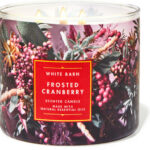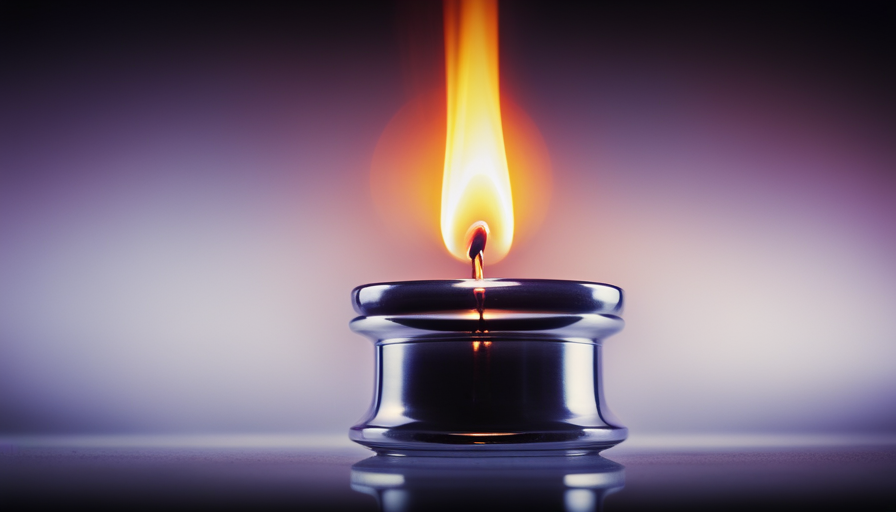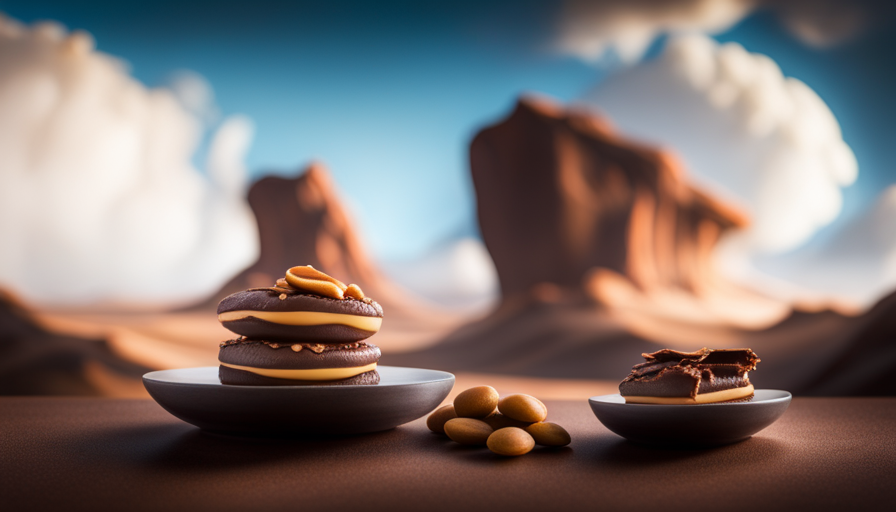Are you tired of dull, uninspiring candles? Are you eager to infuse your own unique style and creativity into your living space? Look no further! This article will provide you with tips on how to personalize and decorate your candles.
Whether you’re decorating for a special occasion or simply want to spruce up your space, dressing a candle is the perfect way to add a pop of color and personality.
Gathering your supplies is the first step in this exciting journey. From ribbons and fabric to paints and glitter, the options are endless.
Once you’ve chosen the right candle and cleaned it thoroughly, it’s time to let your imagination run wild. Decorate with ribbons and fabric for an elegant touch or add personalized embellishments for a unique twist. Experiment with paint and glitter to create stunning designs that will mesmerize anyone who lays eyes on your creation.
But why stop at just dressing the candle itself? Let’s take it one step further by creating a custom candle holder that complements your beautifully adorned candle. And don’t forget about packaging! We’ll explore different techniques for presenting your finished masterpiece in style.
So grab your supplies, unleash your creativity, and get ready to transform ordinary candles into extraordinary works of art. Together, we’ll delve into the world of candle dressing and unlock endless possibilities for adding beauty and charm to every corner of your home.
Key Takeaways
- Candle dressing is a creative way to add personal style and creativity to home decor.
- Supplies needed for candle dressing include ribbons, fabric, paints, glitter, and more.
- Dressing a candle involves decorating it with ribbons, fabric, personalized embellishments, and experimenting with paint and glitter.
- Creating a custom candle holder and packaging are additional ways to enhance the overall presentation.
Gather Your Supplies
Now, it’s time to gather all your supplies so you can start dressing that candle! When it comes to candle dressing techniques, there are countless options to explore. But before we dive into the creative packaging ideas, let’s make sure we have everything we need.
First and foremost, you’ll need a candle. Choose the right candle for your specific purpose. Whether it’s a pillar candle, votive candle, or even a jar candle, consider the size and shape that’ll best suit your design.
Next, grab some essential oils or fragrance oils to add a delightful scent to your creation. These’ll not only enhance the ambiance but also provide therapeutic benefits.
Additionally, gather various decorative items such as dried flowers, ribbons, beads, or even seashells – whatever resonates with your vision. Don’t forget about tools like scissors and glue if you plan on getting crafty with your packaging.
By gathering these supplies beforehand, you’ll be well-prepared to create a stunningly dressed candle that reflects your unique style and intention. So go ahead and choose the right candle for this project; let’s get started on transforming it into something truly remarkable!
Choose the Right Candle
First, make sure you’ve picked out the perfect candle that’ll set the mood for any occasion. The right candle can create a warm and inviting atmosphere in your home or add a touch of romance to a special dinner. When choosing a candle, consider both its color and scent.
Here are three important factors to keep in mind:
-
Candle colors: Different colors evoke different emotions. For a calm and peaceful ambiance, opt for soft pastel shades like pale blue or lavender. If you wanna create an intimate and cozy setting, go for warm hues like deep red or gold. And if you’re aiming for a vibrant and energetic vibe, bright colors like orange or yellow will do the trick.
-
Candle scents: Scents have the power to transport us to different places and trigger memories. Choose a fragrance that aligns with the mood you wanna create. Lavender promotes relaxation, vanilla adds warmth, and citrus scents bring freshness and vitality.
Once you’ve chosen the perfect candle that matches your desired ambiance, it’s time to move on to the next step – cleaning the candle…
[Transition Sentence]: But before we dive into cleaning our candles…Clean the Candle
To keep your candles looking pristine and free from dust or debris, simply wipe them down with a soft cloth after each use. Cleaning candles is an essential step in maintaining their beauty and prolonging their lifespan. It’s important to remove any wax residue that may have accumulated on the surface of the candle. One effective method is to freeze the candle for a few hours. This will make the wax brittle and easy to scrape off using a butter knife or your fingernail. Be careful not to scratch or damage the candle while doing this.
Another option is to use a hairdryer on low heat, aiming it at the wax until it melts slightly. Then, you can gently wipe away the softened wax with a cloth or paper towel. If there are stubborn stains or residue left behind, you can try rubbing alcohol or white vinegar on a cotton ball and dabbing it onto the affected area.
By following these simple cleaning techniques, you can ensure that your candles always look their best. Now that your candles are clean and ready, let’s move on to how to decorate them with ribbons and fabric without altering their shape or functionality.
Decorate with Ribbons and Fabric
Get creative and add a touch of elegance to your candles by using ribbons and fabric for a stylish and personalized look. Decorating your candles with ribbons and fabric is a fun way to elevate their appearance and make them stand out in any room. Here are some ideas to inspire you:
-
Decorate with beads: Add a glamorous touch by adorning your candle with colorful beads that complement the color scheme of your space.
-
Decorate with feathers: Create a bohemian vibe by attaching delicate feathers around the base of the candle, bringing natural elements indoors.
-
Wrap with lace: Give your candle a romantic feel by wrapping it with delicate lace, creating an intricate pattern that adds charm and sophistication.
-
Wrap with burlap: For a rustic or farmhouse-inspired look, wrap your candle in burlap fabric, tying it off with twine for an earthy yet stylish finish.
-
Mix and match fabrics: Combine different textures like satin, velvet, or organza to create unique patterns on your candles.
By incorporating these decorative elements, you can transform plain candles into beautiful works of art. Once you’ve added the ribbons and fabric, it’s time to take it one step further and add personalized embellishments for an even more customized touch.
Add Personalized Embellishments
Enhance the unique beauty of your candles by adding personalized embellishments that reflect your individual style and personality. Personalized candle labels are a wonderful way to make your candles stand out and add a personal touch. You can create custom labels with your favorite designs, quotes, or even photos. Simply print them on adhesive paper and attach them to the glass or container of your candle. This not only adds visual appeal but also allows you to label different scents or occasions.
Another great option is customized candle charms. These small decorative pieces can be attached to the wick or around the base of the candle. You can find ready-made charms or even make your own using beads, pendants, or small trinkets that hold special meaning to you. They not only add a touch of elegance but also provide an opportunity for self-expression.
By incorporating personalized embellishments like candle labels and charms, you can truly make your candles one-of-a-kind. These additions not only enhance their aesthetic appeal but also serve as a reflection of your style and personality.
Now that we’ve explored personalized embellishments, let’s move on to another exciting way to dress up candles – using wax seals or stickers!
Use Wax Seals or Stickers
Adding wax seals or stickers to your candles creates a sense of elegance and sophistication, elevating their overall appeal. While traditional wax seals are a classic choice, there are also numerous alternatives that can add a unique touch to your candles.
One option is using adhesive wax seals, which mimic the look of traditional seals but are easier to apply. These come in various designs and colors, allowing you to personalize your candles with symbols or initials that hold special meaning for you.
Another alternative is using decorative stickers specifically designed for candle embellishments. These stickers often feature intricate patterns, floral motifs, or even inspirational quotes that can enhance the aesthetic of your candles.
To make your candle truly stand out, consider combining different types of embellishments. For instance, you could apply a wax seal on top of a sticker or use multiple stickers to create an eye-catching design. Experimenting with different combinations will help you find the perfect balance between elegance and creativity in dressing your candles.
Transition: Now that we’ve explored the world of wax seals and stickers, let’s dive into another exciting technique: experimenting with paint and glitter to give your candles an extra sparkle!
Experiment with Paint and Glitter
Transform your candles into dazzling works of art by exploring the endless possibilities of paint and glitter. You can add depth and texture to a plain candle with painting techniques, while glitter application brings a touch of sparkle and glamour. Let your creativity run wild as you experiment with different techniques and colors.
To start, gather your supplies: acrylic paints in various shades, small paintbrushes, painter’s tape or stencils for creating clean lines or shapes, and fine glitter in coordinating colors.
Begin by deciding on a color scheme that matches your desired aesthetic. You can go for a monochromatic look or create an ombre effect by blending different shades together.
When it comes to painting techniques, you have several options. Try dry brushing to achieve a distressed look or use splatter painting for a more abstract design. You can also use stencils or painter’s tape to create geometric patterns or stripes.
Once the paint has dried, it’s time to add some sparkle with glitter! Apply glue to specific areas of the candle where you want the glitter to stick, then sprinkle it on top. For a more subtle effect, mix the glitter with Mod Podge before applying.
With these painting techniques and glitter application ideas in mind, you’re well on your way to creating unique and eye-catching candles that will impress everyone who sees them.
Now let’s move on to how you can create a one-of-a-kind candle holder without breaking the bank…
Create a Unique Candle Holder
To truly elevate your candle experience, why not fashion a one-of-a-kind holder that will leave your friends in awe? When it comes to candle holders, there are endless alternatives to explore. One creative and eco-friendly option is repurposing old candle jars. Not only does this give new life to something that would otherwise be discarded, but it also allows you to create a unique and personalized holder.
To help you get started on this DIY project, I’ve created a table below with five different ideas for repurposing candle jars:
| Idea | Description |
|---|---|
| Mason Jar Lantern | Transform an old mason jar into a charming lantern by adding fairy lights or tea candles. |
| Painted Glass Vase | Use glass paint to add intricate designs or patterns onto the surface of the candle jar. |
| Sea Glass Candle Holder | Fill the jar with sea glass pieces for a beachy and soothing aesthetic. |
| Rustic Burlap Wrap | Wrap burlap fabric around the jar and secure it with twine for a cozy farmhouse look. |
| Hanging Terrarium | Fill the jar with small plants or succulents for a whimsical hanging terrarium effect. |
By exploring these candle holder alternatives, you can create a visually stunning centerpiece that complements your candles perfectly. Now that we have our beautifully crafted candle holder, let’s move on to the next step: packaging and presenting our finished product in style!
Package and Present Your Finished Candle
After creating a unique candle holder, it’s time to move on to the next step: packaging and presenting your finished candle. This is where you have the opportunity to showcase your creativity and make your candle truly stand out as a special gift for any occasion.
When it comes to creative gift wrapping ideas for candles, the possibilities are endless. You can use decorative boxes, jars, or baskets that complement the style of your candle. Consider adding ribbons, bows, or even personalized tags to add an extra touch of charm.
For DIY candle packaging for special occasions, you can customize the wrapping materials according to the theme or event. For example, if it’s a wedding gift, you could wrap the candle in delicate lace or tulle fabric and secure it with a satin ribbon. For a birthday present, colorful wrapping paper adorned with confetti designs would be perfect.
Remember that presentation is key when giving candles as gifts. Take your time to ensure every detail is perfect before handing over your beautifully wrapped package.
Now that we’ve explored different ways to package and present our candles, let’s dive into how we can further enhance their appearance through various dressing techniques.
Explore Different Candle Dressing Techniques
Let’s delve into the world of candle dressing techniques and discover how to add a touch of elegance to our creations. Candle carving is an exquisite technique that allows us to transform a simple candle into a work of art. By carefully sculpting intricate designs onto the surface, we can create stunning patterns and textures that will captivate anyone who lays eyes on them.
Layering techniques offer another way to elevate our candles to new heights of beauty. By pouring different colored wax layers, we can achieve a mesmerizing effect that adds depth and dimension to our candles. Whether it’s creating ombre gradients or contrasting vibrant hues, layering allows us to unleash our creativity and experiment with endless possibilities.
Here are five emotional responses you may experience when exploring these candle dressing techniques:
- Awe: Witnessing the intricate details carved onto a candle will leave you in awe.
- Inspiration: Seeing the beautiful layers of colors will inspire your own creative endeavors.
- Serenity: The soft glow emitted by decorated candles creates a calming and tranquil atmosphere.
- Appreciation: Admiring the time and effort put into each carved design or layered color scheme evokes appreciation for the craftsmanship involved.
- Joy: Creating personalized candles using these techniques brings joy as you witness your artistic vision come to life.
With candle carving and layering techniques at our disposal, we can elevate our candles from mere objects to cherished works of art that evoke emotion in those who behold them.
Frequently Asked Questions
Can I use any type of candle for dressing or are there specific types that work best?
When it comes to dressing a candle, not all types are created equal. Different candles yield different results. While you can use any type of candle for dressing, there are specific ones that work best.
For example, beeswax candles have a natural scent that enhances the dressing process, while soy candles provide a clean burn and allow the fragrance to permeate the air effortlessly. Choosing the right candle is crucial for achieving optimal results in dressing.
What are some alternative materials I can use for decorating my candle besides ribbons and fabric?
When it comes to candle decoration, there are endless possibilities beyond ribbons and fabric. Get creative with alternative materials! Consider using natural elements like dried flowers or leaves for a rustic touch.
For a more modern look, try incorporating beads or sequins. If you’re feeling adventurous, experiment with unconventional items like feathers or seashells. The key is to think outside the box and let your imagination run wild when it comes to unique candle embellishments!
How long should I let my candle dry before packaging or using it?
Before packaging or using your candle, it’s important to let it dry completely. The drying time can vary depending on the type of wax and additives used, but generally, I recommend allowing at least 24 hours for the candle to dry thoroughly. This ensures that the wax sets properly and any fragrance or color additives fully adhere to the surface.
Once dry, you can proceed with packaging or dressing your candle to make it look even more appealing.
Can I use hot glue to attach embellishments to my candle?
Yes, you can definitely use hot glue to attach embellishments to your candle. When it comes to candle dressing techniques, hot glue is a popular choice for securing various decorations such as beads, ribbons, or dried flowers. It provides a strong bond and dries quickly, making it convenient for adding that extra touch of elegance to your candles. Just be cautious not to apply too much heat directly onto the wax when using hot glue.
Are there any safety precautions I should take when dressing a candle, such as using a heat-resistant surface or wearing gloves?
When dressing a candle, it’s important to prioritize safety. I always make sure to use gloves to protect my hands from any potential burns or irritation.
Additionally, using a heat-resistant surface is crucial in preventing any accidental fires or damage to surrounding objects.
By taking these precautions, I can confidently focus on creating beautiful designs and embellishments for my candles without worrying about any potential harm.
Conclusion
As I’m putting the finishing touches on my beautifully dressed candle, a sense of satisfaction and delight washes over me like warm candlelight. The ribbons and fabric dance around the flickering flame, adding an elegant touch to its already mesmerizing glow.
With each stroke of paint and sprinkle of glitter, I’ve transformed a simple wax cylinder into a work of art. As I hold the finished creation in my hands, ready to package it up and present it to someone special, I can’t help but feel like a true artisan of light.
















